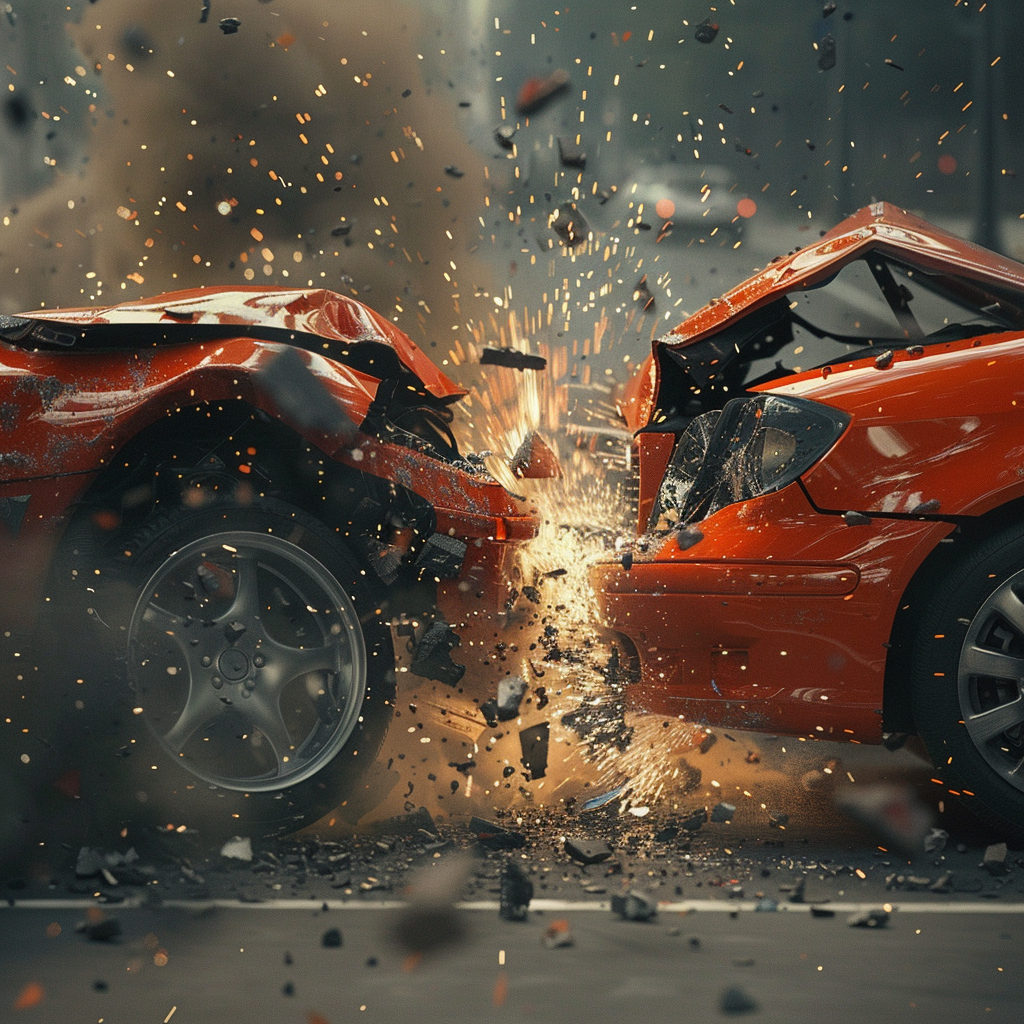Navigating the aftermath of a head-on collision can be an overwhelming journey, fraught with physical pain, emotional turmoil, and complex legal challenges. As someone who has delved deep into the nuances of personal injury law, I’ve seen firsthand how these accidents can turn lives upside down. Through this blog, I aim to shed light on the myriad injuries associated with head-on collisions and offer guidance to those facing this daunting road to recovery.
Table of Contents
- Understanding Head-On Collision Injuries
- Common Injuries from Head-On Collisions
- Psychological Impact
- Legal Aspects Surrounding Head-On Collision Claims
Understanding Head-On Collision Injuries
Definition and Common Causes
Head-on collisions, the most feared type of road accident, occur when the fronts of two vehicles crash into each other. Often resulting from driving on the wrong side of the road or veering off course due to loss of control, these accidents are notorious for their severity. Factors such as distracted driving, intoxication, fatigue, and poor weather conditions frequently contribute to such devastating incidents.
Physics Behind Impact Severity
The intensity behind head-on collision injuries is largely explained by physics. When two vehicles collide frontally at high speeds, the force exerted upon impact is immense; it’s essentially double that if one were hitting a stationary object at a similar speed because both parties are moving towards each other. This dramatic increase in force explains why injuries from head-on collisions tend to be more severe and life-threatening compared to other types of crashes. The damage is not only physical, but mental as well.
Common Injuries from Head-On Collisions
Traumatic Brain Injuries (TBI) and Concussions
One of the most common, yet grave injuries resulting from head-on collisions is traumatic brain injury, including concussions. These can range from mild to severe, affecting cognitive functions such as memory, concentration, and emotional regulation. Symptoms might not appear immediately but can have a lasting impact on an individual’s quality of life.
Spinal Cord Injuries
Spinal cord injuries are another dire consequence of head-on collisions. The forceful impact can fracture vertebrae or dislocate parts of the spine leading to temporary or permanent paralysis (quadriplegia/tetraplegia or paraplegia). Recovery often involves long-term rehabilitation and sometimes surgery; however, many face a future with significant mobility restrictions.
Internal Organ Damage
The intense compression and sudden stop in a head-on collision put occupants at risk for internal organ damage. Organs like the liver, spleen, kidneys, or lungs may be lacerated or ruptured upon impact. Such injuries require immediate medical attention due to their potentially fatal complications if left untreated.
Fractures and Broken Bones
Limbs are especially vulnerable in front-end crashes due to instinctive bracing against impact which leads to fractures ranging from simple breaks that may heal with time and care—to compound fractures requiring surgical intervention for recovery.
Psychological Impact
Post-Traumatic Stress Disorder (PTSD)
Following a head-on collision, individuals may experience PTSD, marked by recurring memories of the trauma, nightmares, and severe anxiety. These symptoms can disrupt daily life significantly. Recognizing signs early and seeking professional help is crucial for coping with PTSD.
Anxiety and Depression
The psychological aftermath of surviving a head-on collision doesn’t end with PTSD; many victims also struggle with anxiety and depression. The sudden shock to one’s sense of safety can lead to a prolonged feeling of sadness, loss of interest in previously enjoyed activities, and an overwhelming sense of dread or fear about the future.
These mental health challenges underscore the importance of comprehensive post-accident care that addresses both physical injuries and emotional well-being. A failure to act can significantly affect quality of life going forward.
Legal Aspects Surrounding Head-On Collision Claims
Determining Fault in a Head-On Collision Case
Establishing who is at fault in a head-on collision is pivotal for any subsequent legal claim. This process involves examining evidence from the accident scene, vehicle damage, witness statements, and sometimes expert reconstructions. The determination of fault influences compensation claims significantly as it establishes liability.
Types of Damages Victims Can Pursue
Victims of head-on collisions can seek various forms of damages through legal channels. These include compensatory damages for medical expenses, lost wages due to inability to work, and pain and suffering endured because of the accident. In some cases, punitive damages may also be awarded to punish particularly reckless behavior that led to the collision. While these damage payments will not make up for the accident, they can help ease the suffering of victims, as well as their financial burdens.
Importance of Having an Experienced Personal Injury Lawyer
Navigating the complexities of personal injury law following a head-on collision requires expertise and experience. An adept Boca Raton auto accident attorney not only guides victims through the intricacies but also advocates on their behalf—ensuring that they receive fair compensation for their injuries and losses. Partnering with an experienced attorney such as those at Silver Injury Law can make a significant difference in the outcome of your case. Our attorneys are on the scene collecting evidence, interviewing potential witnesses, and putting you in the best position going forward.




